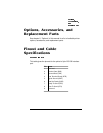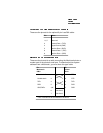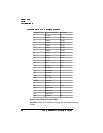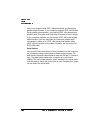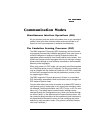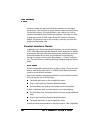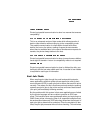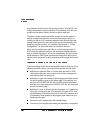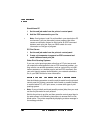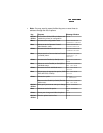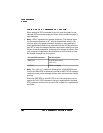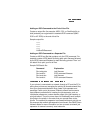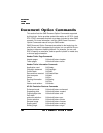
Printer-host parallel communication is done in a manner that ensures
compatibility.
This is an advanced version of byte mode which allows transfer of
data in either direction without returning to the compatibility mode.
The parallel communication is a half-duplex channel with either
device, the host or the printer, making a request for data transfer
when there is available data. In the case of simultaneous requests for
transfer, the printer always defers to the host.
Printer-host parallel communication is done via asynchronous bidirec-
tional eight-bit transfer. A return to compatibility mode is not required.
Printer-host parallel communication is done in nibbles (four bits; one-
half byte) with the low order nibble sent first. A transfer of two nibbles
is required for each byte of information.
End Job Mode
When sending print jobs through the serial and parallel protocols,
some applications and their printer drivers append an end-of-docu-
ment command (EOD) to each print job to ensure that each file prints
correctly. The reason for this is that some protocols and print queuing
systems send print jobs to the printer as one continuous data stream
(one print job immediately following another).
But the problem with this system is that some applications are limited
by the printer language and are unable to produce an EOD com-
mand. This becomes even more problematic when you’re printing to a
QMS Crown printer, where print jobs of all supported emulations can
be received simultaneously. ESP technology examines the first part of
each print job to determine its emulation. Once the emulation is iden-
tified, the print job processes without further checking. This minimizes



